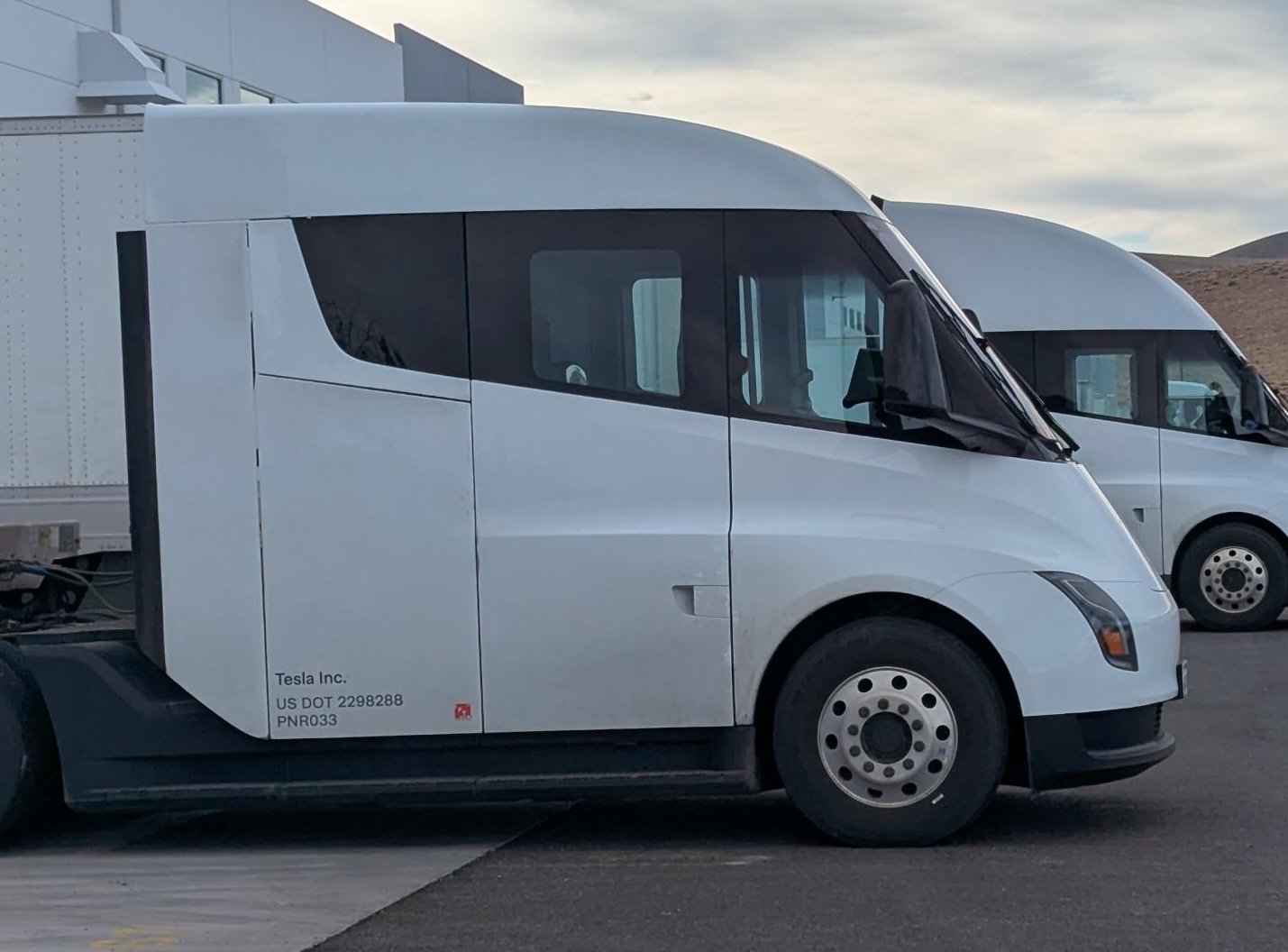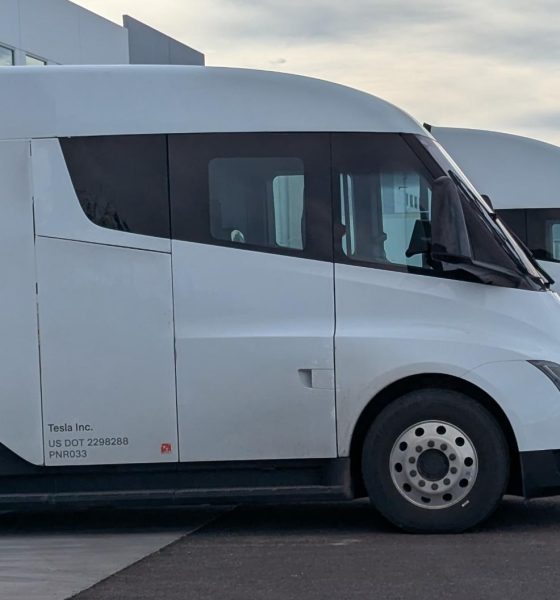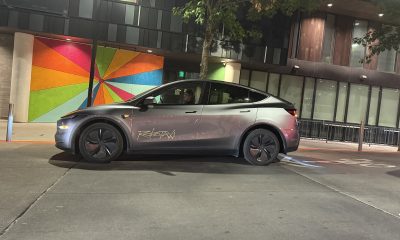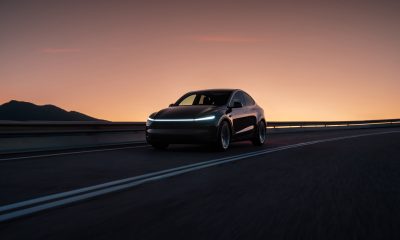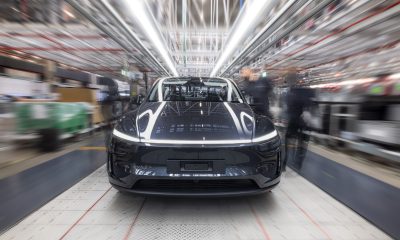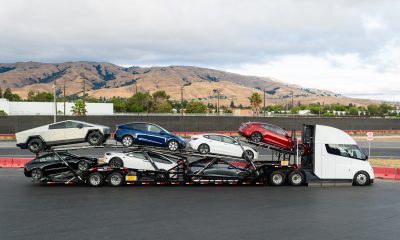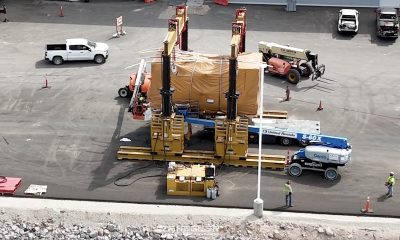The Tesla Semi is not yet being mass produced, but it is evident that the electric vehicle maker is busy pushing the envelope with its Class 8 all-electric truck.
This was highlighted recently when a longtime Tesla Semi advocate spotted a rather interesting configuration of the vehicle being tested in Nevada.
The latest sighting:
- As per a recent video from Tesla Semi advocate @HinrichsZane, the electric vehicle maker is now testing its Class 8 all-electric truck with twin tandem trailers.
- Twin tandem trailers typically involve two containers that are pulled by a single truck. This makes transporting different types of goods more efficient.
- This appears to be the first time that Tesla has been spotted testing twin tandem trailers on the Semi, though the EV watcher noted that even triple trailers are allowed in Nevada.
- With this in mind, it might not be too long before the Tesla Semi is spotted being tested with a triple trailer.
Tesla Semi First – Two Tesla semi’s pulling tandem trailers. I see lots of Tesla semi’s around Giga Nevada but this is a first.
Tesla is now testing tandem trailer configuration. Triples are legal in Nevada. Probably won’t be long until we see them testing them. pic.twitter.com/Nnmh2VaVKQ— Zanegler (@HinrichsZane) January 5, 2025
Tesla Semi quick facts:
- When fully loaded at 82,000 lbs gross combination weight, the Tesla Semi is capable of traveling 300 or 500 miles per charge, depending on its variant.
- The Semi has an energy consumption of less than 2 kWh per mile.
- The Semi features three independent motors on rear axles.
- The vehicle is also capable of accelerating to highway speeds in 20 seconds.
- First deliveries of the Tesla Semi were held in 2022, though the vehicle is still produced in limited quantities today.
I was scoping out the place Friday, was hoping I'd run into you. Security folks are really nice, recognized me as a harmless tourist from Vermont and let me gawk. pic.twitter.com/tHUqfOB8NM— Paul Webb (@paultwebb) January 5, 2025
The Tesla Semi Factory:
- Tesla is expected to complete a dedicated Tesla Semi factory in Nevada sometime this 2025.
- Once ramped, the facility is expected to produce about 50,000 units of the Tesla Semi per year.
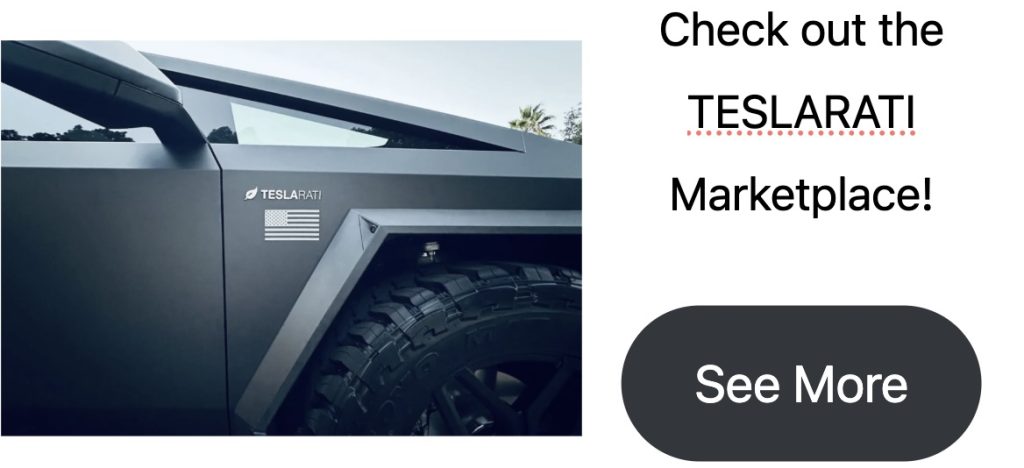
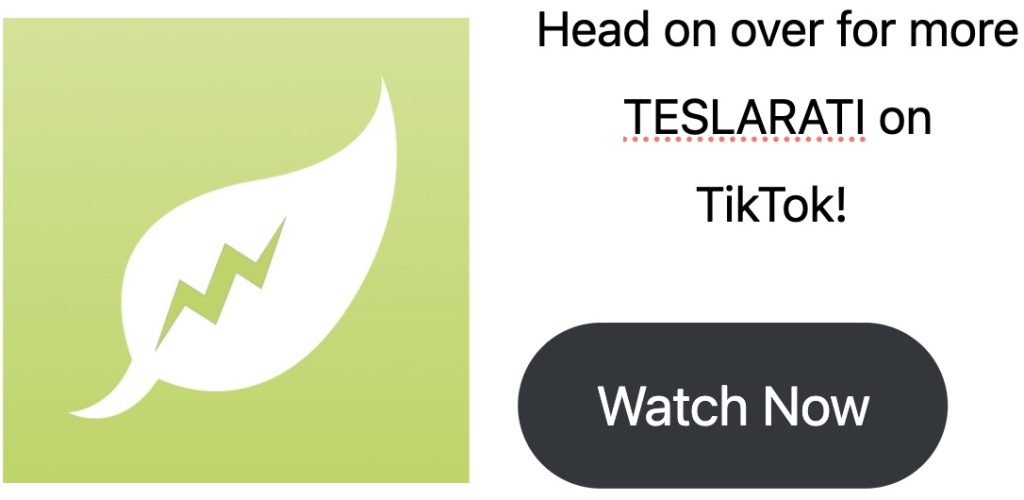
Don’t hesitate to contact us with news tips. Just send a message to simon@teslarati.com to give us a heads up.
Elon Musk
Tesla looks to expand Robotaxi geofence once again with testing in new area
It looks as if Tesla is preparing for its next expansion of the geofence, potentially moving toward a much larger service area that could eclipse 150 square miles.

Tesla looks to be preparing for the potential expansion of the Robotaxi geofence once again, as the company was spotted testing the suite in an area well outside of the Austin service area.
After it first launched the Robotaxi platform on June 22, Tesla has managed to expand its geofence twice, essentially doubling the travel area both times.
The most recent expansion took the size of the geofence from 42 square miles to about 80 square miles, bringing new neighborhoods and regions of the city into the realm of where the driverless vehicles could take passengers.
However, it looks as if Tesla is preparing for its next expansion of the geofence, potentially moving toward a much larger service area that could eclipse 150 square miles.
Over the weekend, one fan noticed a Robotaxi validation vehicle testing in Bee Cave, Texas, which is roughly 25 minutes from the edge of the current geofence:
Tesla spotted doing Robotaxi validation testing in Bee Cave, Texas, about 15 miles west of Austin (20-25 minute drive from current edge of geofence). pic.twitter.com/JCOcoys8SJ
— Sawyer Merritt (@SawyerMerritt) August 23, 2025
Tesla has been testing vehicles in the western suburbs of Austin for some time, and it seems the company is laying some groundwork to push its geofence expansion into Plaid Mode as competition with Waymo continues to be at the forefront of the conversation.
Waymo has been expanding with Tesla for some time, as the pace of expansion for the two companies has been relatively accelerated for the past couple of months.
Tesla’s expansions of the geofence sent a clear message to competitors and doubters, but it is still aiming to keep things safe and not push the envelope too quickly.
The geofence expansion is impressive, but Tesla is also focusing on expanding its vehicle fleet in both Austin and the Bay Area, where it launched a ride-hailing service in July.
Tesla Bay Area autonomous fleet to grow to over 100 units: Elon Musk
Still, safety is the priority at the current time.
“We are being very cautious. We do not want to take any chances, so we are going to go cautiously. But the service areas and the number of vehicles in operation will increase at a hyper-exponential rate,” CEO Elon Musk said during the Q2 Earnings Call.
News
Tesla considers making a big move with Model Y pricing as demand is skyrocketing
“Trending toward a need to expedite output even further, which could mean adjusting pricing upward in the coming days. Trying hard not to, will see.”
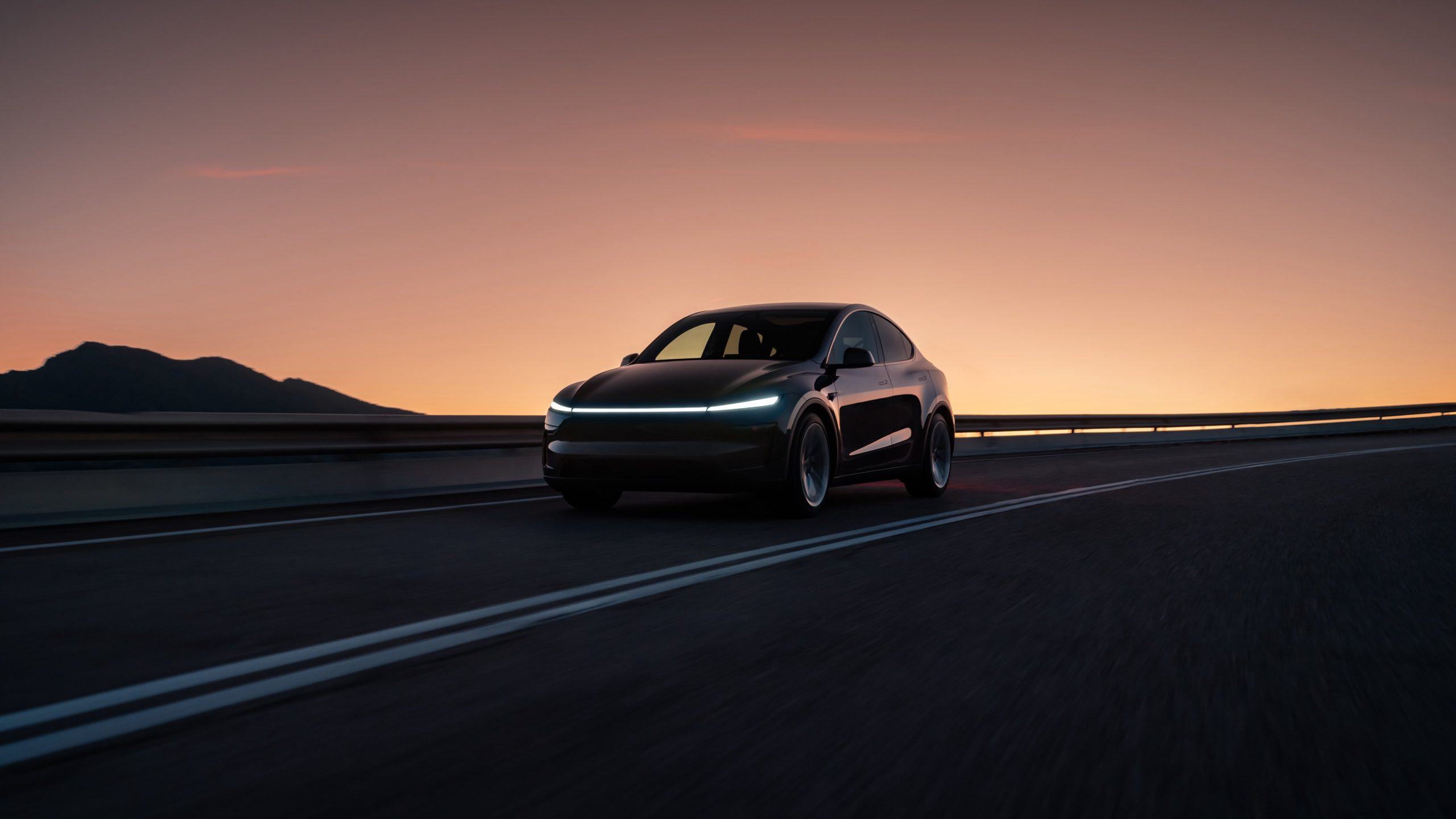
Tesla is considering making a big move with Model Y pricing as demand is skyrocketing due to the EV tax credit expiring in just over a month.
With the $7,500 EV tax credit set to be removed on September 30, Tesla is experiencing increased demand for its Model 3 and Model Y. Customers are doing whatever they can to take delivery of the car they ordered as soon as possible.
The IRS recently adjusted the EV tax credit’s rules slightly.
Previously, the vehicle had to be delivered by September 30, but a slight tweak the agency made last week will now allow customers to enter a legally binding contract along with a marginal down payment by that date. The delivery can occur after September 30, and the car can still qualify for the credit.
However, demand is getting so crazy for the Model Y that Tesla is considering a price increase on the all-electric crossover, as well as a potential boost in production output to keep up with orders.
Inventory is dwindling in several markets across the United States, a good sign for the company, as it could have one of its best quarters in recent history in terms of deliveries.
However, Tesla is thinking of bumping the price slightly, Raj Jegannathan, the company’s VP of IT, AI Infrastructure, Apps, Infosec, and Vehicle Service Operations, said on X:
Trending toward a need to expedite output even further, which could mean adjusting pricing upward in the coming days. Trying hard not to, will see.
— Raj Jegannathan (@r_jegaa) August 25, 2025
The price adjustment would come as a response to increasing production output, Jegannathan’s response seems to indicate.
The bump would help Tesla’s margins, but the idea that the company could adjust pricing by increasing it would not be popular with potential car buyers. It might encourage some buyers to put their orders in sooner, hoping to avoid a new, higher price.
However, it could also steer some buyers away from putting an order in on a vehicle, especially if the price increase is more than a few hundred dollars.
Tesla boosted the price of the Model S, Model X, and Cybertruck recently, but brought in a “Luxe Package” to help justify it.
It comes with Free Full Self-Driving, Free lifetime Supercharging, four years of premium service, and lifetime Premium Connectivity.
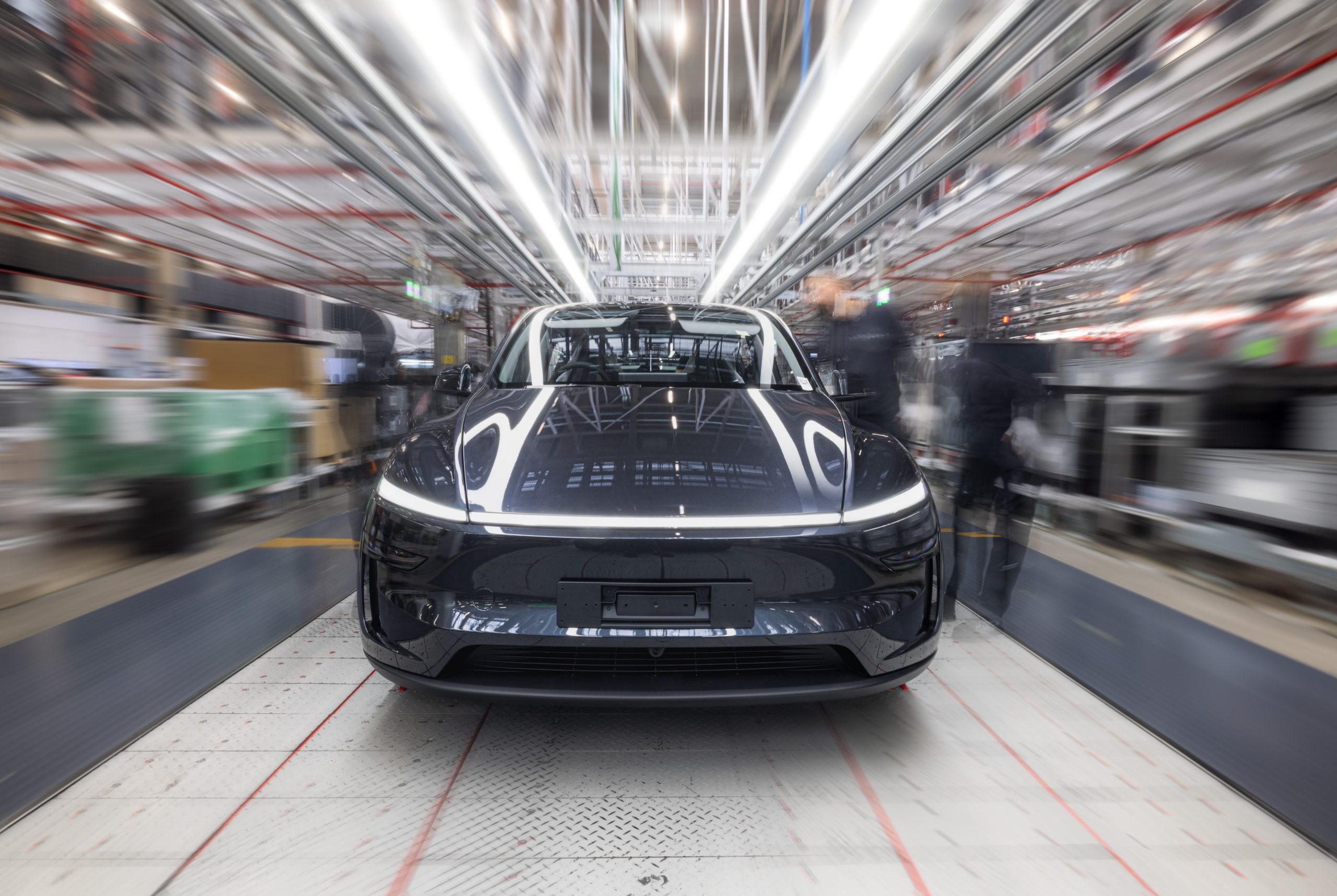
Tesla has produced its 100,000th new Model Y at Gigafactory Berlin. The milestone was announced by the electric vehicle maker through its official Tesla Manufacturing account on social media platform X.
New Tesla Model Y milestone
The milestone was announced by Tesla on X, when the company wrote “Today, we built the 100,000th New Model Y at Giga Berlin!” The announcement was accompanied by an image of a new Model Y coming off the line.
The milestone was received warmly by members of the Tesla community, many of whom expressed excitement at the further progress of the new Model Y program at Giga Berlin. The facility, after all, only produces Model Y units, which would make it the perfect site to produce new variants like the Model Y Performance and possibly even the Model Y L, which was recently launched in China.
New Model Y ramp
As noted in a previous report from electrive, the initial production of the new Model Y started in Giga Berlin around mid-January 2025. Since the new Model Y involved a changeover from the legacy Y to the new variant, the ramp of the new Model Y’s production at the Germany-based facility was likely a gradual process over the past months.
It would then be no surprise if the next 100,000 new Model Y units would be produced in Giga Berlin in a shorter period. Giga Berlin could become an even bigger factor in Tesla’s global sales, after all, especially if it becomes the site that produces the Model Y Performance and the Model Y L for Europe and other territories. Giga Berlin, if any, seems to be quite busy recently, with aerial videos of the facility showing a fleet of mysteriously covered Model Y units being stored within the complex.
-
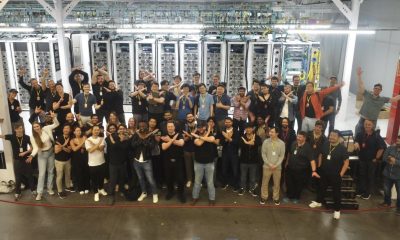
 Elon Musk3 days ago
Elon Musk3 days agoElon Musk takes aim at Bill Gates’ Microsoft with new AI venture “Macrohard”
-
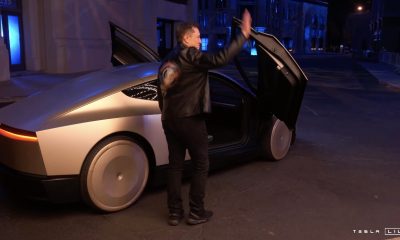
 Elon Musk8 hours ago
Elon Musk8 hours agoElon Musk argues lidar and radar make self driving cars more dangerous
-
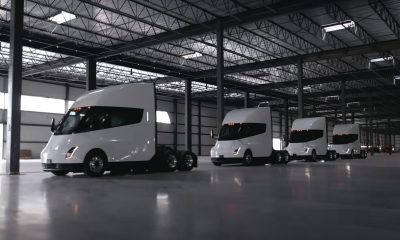
 News2 weeks ago
News2 weeks agoElon Musk reaffirms Tesla Semi mass production in 2026
-
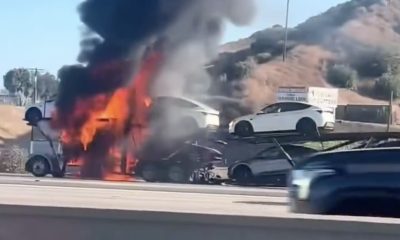
 News1 week ago
News1 week agoTesla clarifies LA car carrier fire started in diesel semi, not EV batteries
-
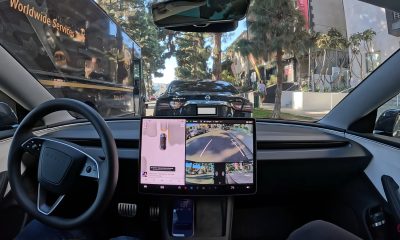
 News2 weeks ago
News2 weeks agoTesla FSD V14 gets tentative release date
-
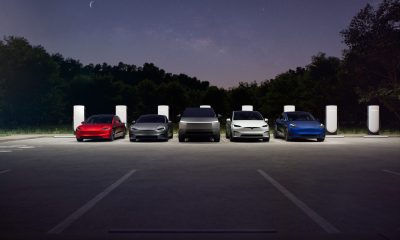
 Elon Musk2 weeks ago
Elon Musk2 weeks agoTesla warns consumers of huge, time-sensitive change coming soon
-
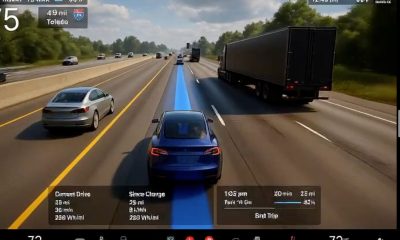
 News2 weeks ago
News2 weeks agoTesla plans to use Unreal Engine for driver visualization with crazy upgrade
-
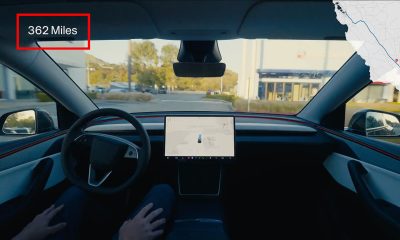
 News2 weeks ago
News2 weeks agoTesla flexes its most impressive and longest Full Self-Driving demo yet

